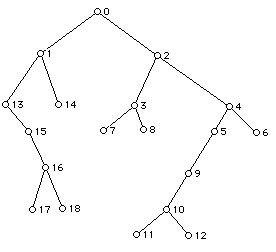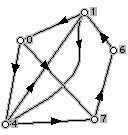
Discrete Mathematical Structures; Mathematics 225
Review Examination III (Spring 2007)
Prepared by:
Joseph Malkevitch
Department of Mathematics
York College (CUNY)
Jamaica, New York 11451
Email: malkevitch@york.cuny.edu
Web page:
http://www.york.cuny.edu/~malk
1. Given the digraph below:

a. Write down the relation associated with this digraph.
b. Write down the invalence and outvalence (also known as indegree and outdegree) of each vertex of the digraph.
c. Write down the adjacency matrix associated with this digraph.
d. Find, if possible, a path of length three starting at vertex 0.
d. Find, if possible, a cycle of length 2.
e. Find if possible a cycle of length 4.
f. Find the number of vertices in the digraph.
g. Find the number of edges in the digraph.
h. Does this relation represent a partial order?
2. (i) Is f(n) = 5n2 + log n + 9000
(ii) Is g(n) = 1000n4 + 5000(2n) + 343(log n)
a. O (n4) b. O ( 3n ) c. O ( n ) d. O ( n2 ) ?
3. Draw the Hasse diagrams associated with the divisibility partial order defined for the following sets:
a. M = { 4, 5, 7, 14, 28, 20, 24, 40, 90, 100}
b. T = { 2, 4, 6, 8, 12, 16, 20, 24, 30, 40, 50, 60}
4. Suppose the relation R is defined by aRb if b = 2a.
a. What elements belong to R when this relation is defined on the set:
i. M
ii. T
5. Given the Hasse diagrams below for a poset (partially ordered set):
a.
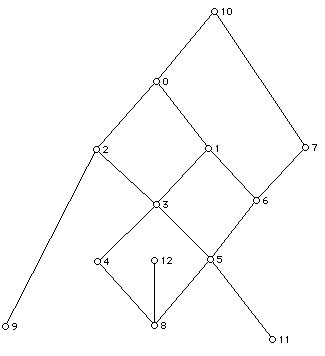
b.
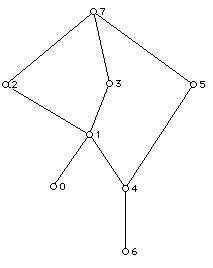
c.
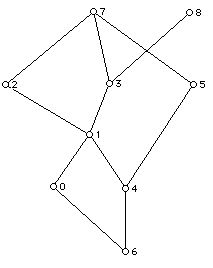
i. Find all the maximal and minimal elements in each Hasse diagram, if there are any. Find a greatest element and a least element in each Hasse diagram if they exist.
ii. Conduct a topological sort for each of the Hasse diagrams. Is the linear order you obtain unique?
iii. Draw the full partial order associated with the Hasse diagram c. above.
iv. If possible find 3 mutually incomparable elements in each of the partial orders.
6. Consider the graph G below:
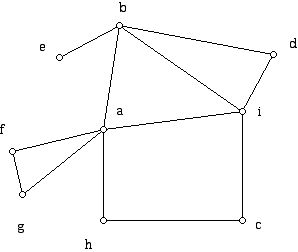
a. Determine the number of vertices of G
b. Determine the number of edges of G
c. What is the valence of each vertex of G?
d. Can you find a path of length 2 from f to i?
e. Can you find a path of length 5 from f to i?
f. What is the graph distance from e to each of the other vertices in the graph? (The distance between two vertices is the length of a shortest path (e.g. fewest edges) between the two vertices.)
g. What is the graph distance between c and every other vertex of the graph?
7. a. Write down the list of vertices which results from
i. Postorder
ii. Preorder
iii. Inorder
traversal of the trees below. (Be able to do this using recursion.)
b. What is the name of the root for each tree below?
c. What is the parent of vertex 6 in each tree?
d. What is the parent of vertex 3 in each tree?
e. Determine the children (offspring) of vertex 5 (if any) in each tree?
f. List, if any, the vertices at level 3 in each tree?
g. List, if any, the vertices at level 4 in each tree?
h. List, if any, the siblings of vertex 6 in each tree?
i. List for each tree, the subtree growing from vertex 2.
j. List the leaves (vertices of degree 1 in the undirected tree) for each tree.
k. List, if possible, the parent of vertex 5.
l. List, if possible, the children of vertex 4.
m. How many vertices, if any, are there in the left subtree at 1?
n. How many vertices, if any, are there in the right subtree at 2?
Tree S:

Tree U:
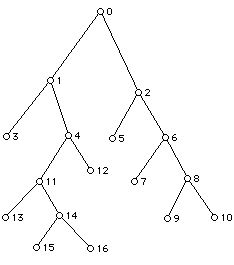
Tree W:
